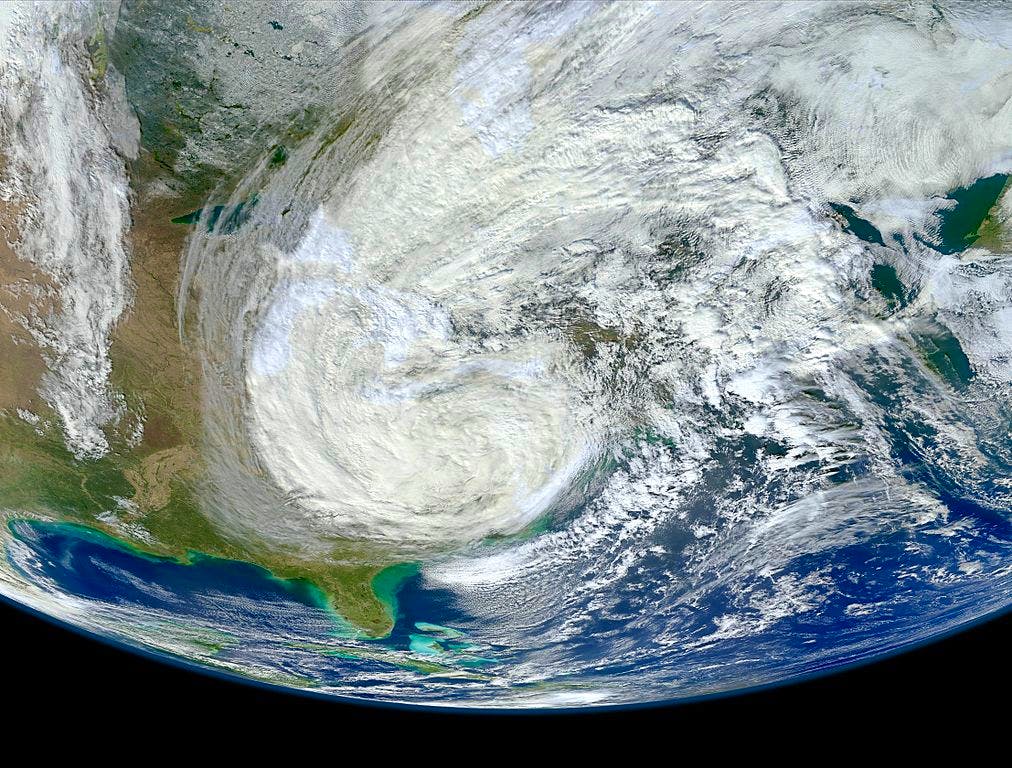Noah Matson, Vice President of Landscape Conservation and Climate Adaptation

Storm damage in New Jersey
When Superstorm Sandy swept ashore in late October, it left an almost unimaginable level of damage: thousands of residents still displaced, entire communities destroyed and an economic toll that promises to make Sandy one of the costliest natural disasters in history. But it also swept away our illusions that we can carry on with business as usual in a changing climate.
Sandy exposed incredible vulnerabilities to coastal storms and floods in the region. While the storm was unprecedented, the effects of climate change, namely higher sea levels and larger storms, mean that we can no longer operate as if a recurrence is only a remote possibility. It’s clear that we cannot simply rebuild; we must also rethink the way we approach recovery efforts, and begin to prepare for future extreme weather events and sea level rise by rebuilding in a way that makes us less vulnerable to future damage.
Defenders of Wildlife has argued that in many cases, this will require restoring and enhancing natural ecosystems that provide flood control and storm surge attenuation while also providing other benefits including clean water, wildlife habitat, and economic and recreational opportunities. Our publication “Harnessing Nature,” published earlier this year, describes several of these projects and the benefits they can provide.
After a disaster of Sandy’s magnitude, the need for federal assistance to help the region recover could not be more apparent or more urgent. The U.S. Senate has responded by putting forth a $60 billion emergency funding bill, and we are pleased to see that it shows tremendous foresight in its recognition of the role that coastal ecosystems can play in protecting communities from weather-related disasters. The funding bill helps accomplish this by providing:

Storm surge damage at Chincoteague National Wildlife Refuge (Credit: USFWS Northeast)
• $78 million to restore and repair national wildlife refuges. Thirty-five refuges were closed following the storm and some still remain closed. The overall damage to refuges was equivalent to 16% of the System’s overall annual budget – but would’ve been much worse if not for the natural protection provided by refuge wetlands and dunes. These funds will help shore up these natural defenses and repair facilities so that visitors can return.
• Nearly $350 million to restore and protect coastal and estuarine habitats, like dunes and salt marshes. Habitat restoration in coastal areas will help buffer communities from storms and recover fisheries- and coastal habitat-based economies. Some of this money will allow acquisition or easements of important natural areas, so they are protected from development and can continue to provide flood and storm protection benefits to communities in addition to their ecological, recreational and economic value.
• $125 million to help restore and protect storm-abating wetlands on farmland land and other private lands. This program provides funding to remove debris from stream channels, stabilize stream banks and restore damaged uplands stripped of protective vegetative cover, thus reducing flood risk. The program also funds easements to reduce development along river floodplains, reducing risk to people and property while also conserving habitat and improving water quality.
• Funds to plan and construct flood-reducing projects that support the long-term sustainability of coastal ecosystems: This money will help different agencies work together to identify people and places that are vulnerable to flooding. It also provides $2.9 billion to the Army Corps of Engineers to “reduce future flood risk in ways that will support the long-term sustainability of the coastal ecosystem and communities.” The bill also requires the Army Corps to reevaluate previously authorized projects in light of recent extreme weather events, as well as scientific projections of future climate-related risks.
The general provisions of the funding bill also require federal agencies to plan for future risks of increased extreme weather events and sea level rise in all recovery efforts. This is really a paradigm shift that could get the country on the road to re-thinking instead of just rebuilding.

Before and after images of flood damage from Hurricane Sandy at Prime Hook National Wildlife Refuge (Credit: USFWS)
Unfortunately, as is common with these kinds of “must-pass bills,” a few bad provisions have been slipped in. We strongly oppose two measures that would limit environmental review and public participation, which may lead to poor planning, communities more vulnerable to disaster risks and many other concerns:
• The bill authorizes any Army Corps flood protection project that is under study (i.e. any project throughout the nation that was begun before Hurricane Sandy) provided that the Corps demonstrates the project is cost-effective. This would allow projects to move forward even if they have serious environmental problems, like impacts to endangered wildlife.
• It also unnecessarily implements “streamlining” that would allow circumventing environmental laws when providing disaster assistance. The individual laws in question (The Endangered Species Act, the Clean Water Act and the National Environmental Policy Act) already include emergency provisions that allow for expedited reviews and procedural changes to protect human health and safety in response to disasters and emergencies. There is no need to open the door to blanket waivers of environmental laws.
We believe this essential funding will provide much-needed relief to the victims of this devastating hurricane. If Congress retains the forward-thinking provisions and strikes the ones that waive public interest requirements, we’ll get a bill that will not only help the region recover, but will also reduce its vulnerabilities to future extreme climate-related events and the enormous loss of lives and livelihoods these events bring.



